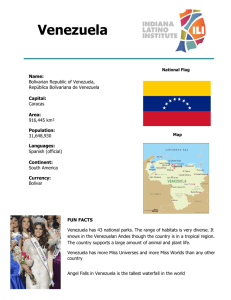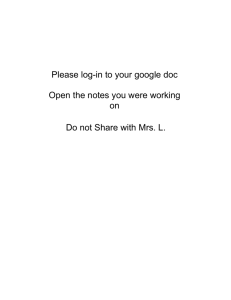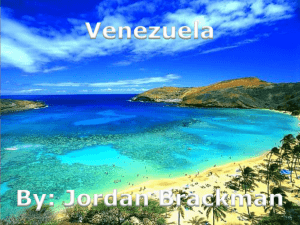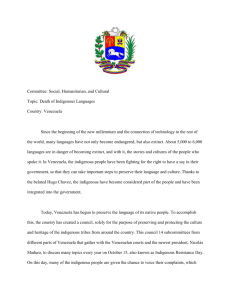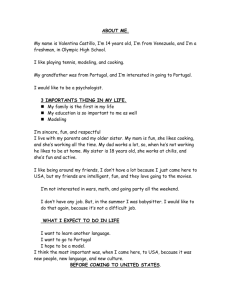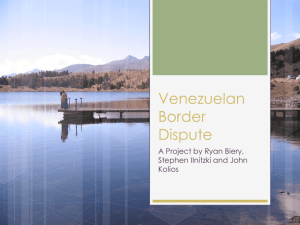ZENT, S. - Traditional Environmental Language
advertisement
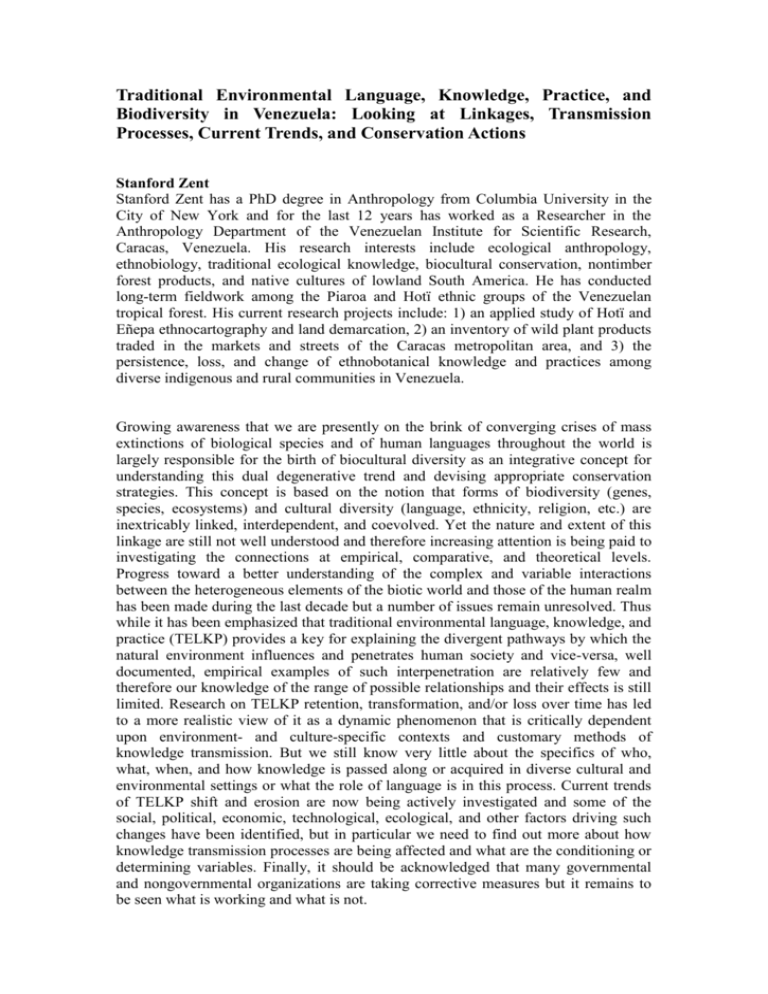
Traditional Environmental Language, Knowledge, Practice, and Biodiversity in Venezuela: Looking at Linkages, Transmission Processes, Current Trends, and Conservation Actions Stanford Zent Stanford Zent has a PhD degree in Anthropology from Columbia University in the City of New York and for the last 12 years has worked as a Researcher in the Anthropology Department of the Venezuelan Institute for Scientific Research, Caracas, Venezuela. His research interests include ecological anthropology, ethnobiology, traditional ecological knowledge, biocultural conservation, nontimber forest products, and native cultures of lowland South America. He has conducted long-term fieldwork among the Piaroa and Hotï ethnic groups of the Venezuelan tropical forest. His current research projects include: 1) an applied study of Hotï and Eñepa ethnocartography and land demarcation, 2) an inventory of wild plant products traded in the markets and streets of the Caracas metropolitan area, and 3) the persistence, loss, and change of ethnobotanical knowledge and practices among diverse indigenous and rural communities in Venezuela. Growing awareness that we are presently on the brink of converging crises of mass extinctions of biological species and of human languages throughout the world is largely responsible for the birth of biocultural diversity as an integrative concept for understanding this dual degenerative trend and devising appropriate conservation strategies. This concept is based on the notion that forms of biodiversity (genes, species, ecosystems) and cultural diversity (language, ethnicity, religion, etc.) are inextricably linked, interdependent, and coevolved. Yet the nature and extent of this linkage are still not well understood and therefore increasing attention is being paid to investigating the connections at empirical, comparative, and theoretical levels. Progress toward a better understanding of the complex and variable interactions between the heterogeneous elements of the biotic world and those of the human realm has been made during the last decade but a number of issues remain unresolved. Thus while it has been emphasized that traditional environmental language, knowledge, and practice (TELKP) provides a key for explaining the divergent pathways by which the natural environment influences and penetrates human society and vice-versa, well documented, empirical examples of such interpenetration are relatively few and therefore our knowledge of the range of possible relationships and their effects is still limited. Research on TELKP retention, transformation, and/or loss over time has led to a more realistic view of it as a dynamic phenomenon that is critically dependent upon environment- and culture-specific contexts and customary methods of knowledge transmission. But we still know very little about the specifics of who, what, when, and how knowledge is passed along or acquired in diverse cultural and environmental settings or what the role of language is in this process. Current trends of TELKP shift and erosion are now being actively investigated and some of the social, political, economic, technological, ecological, and other factors driving such changes have been identified, but in particular we need to find out more about how knowledge transmission processes are being affected and what are the conditioning or determining variables. Finally, it should be acknowledged that many governmental and nongovernmental organizations are taking corrective measures but it remains to be seen what is working and what is not. All of these issues are potentially important for development of a policy of biocultural diversity conservation and they will be explored in the present paper through a selective look at the current situation of biodiversity and cultural diversity and their linkages in Venezuela. Specific examples will be discussed based on the author’s research among indigenous groups in that country. The topics that will be covered include: (1) the chain of connection among traditional environmental language, knowledge, behavior, species, and biotic communities; (2) observable patterns and processes of knowledge transmission/acquisition within and across generations, local communities, and ethnic groups; (3) the importance of native language for encoding, storing, and communicating knowledge and information about the environment; (4) current trends of TELKP loss/change and their conditioning factors; (5) the impact of cultural and environmental changes on TELKP transmission, especially the effects of formal education and bilingualism, (6) the current state of indigenous languages in Venezuela and their prospects for survival, and (7) an evaluation of some of the policies and programs that are being enacted at national as well as local levels to safeguard indigenous languages and knowledges.
